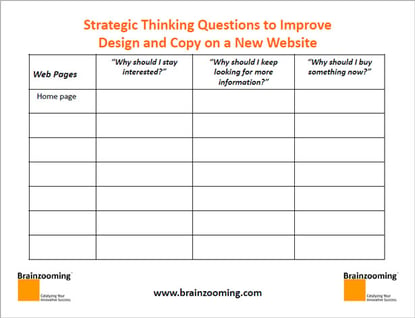Looking ahead to transitioning from planning to doing and wanting to maximize success?
Try these 5 implementation strategy steps for launching a big initiative properly so the initial implementation leads to outstanding results later.
1. Make Sure You Have the Right Team
The big first implementation strategy step is assembling the right team with the skills, experience, and perspectives to make a big initiative happen. This begins with envisioning the initiative’s scope and reach. For those who’ve been blessed with skills as visual thinkers, this may be an easy step. These types of people can simply “watch” an initiative play out in their minds, almost as if it were a movie. They see the scenes and think about what happens and all the people that need to be in place.
For those less visually-inclined, it helps to get a couple of people you know will be on the team, the starting project timeline, and a white board. List the key steps for implementing the initiative. Then, for each step, list who is best prepared to implement it, whose work they will depend on before theirs so they can implement, and who will work with what they produce in the initiative. By exploring those three areas for each step, you’ll have a much more robust list of potential project team participants. With this expanded list, you can start to make sure you have all the types of people and necessary skills accounted for among your project team.
2. Share the Expected Impact and Experience from a Successful Initiative
Even if there is a stated objective or SMART (Specific, Measurable, Achievable, Results-focused, and Time-bound) goal created for the initiative upfront, it’s helpful to envision in a broader way what the initiative is supposed to deliver. You can frame the initiative’s expected impact in several concrete ways:
- What will the team do to implement the initiative?
- How will the initiative’s audiences react as it is implemented? How will they benefit from it?
- What will be the business results from the initiative’s success?
Articulating this envisioned impact provides a more complete perspective of the experience and look of success at every step of the initiative’s implementation. This prepares a team to help you, as a leader, monitor and adjust to keep the initiative on track for its timely completion.
3. Provide a Broad Starting View to Your Team Members
Typically, an initiative’s leader has greater exposure to the plan based on the length of time you’ve been involved, your experience, and/or where you sit in the organization. If this is the case, it behooves you to share as much of what you know as possible with newly-involved initiative team members. To launch the team most successfully, the leader should bring together all the relevant information – including highlighting what isn’t known – to make team members as uniformly smart as possible on the initiative.
Offering this overview even before the team meets the first time provides an immediate confidence boost. It sends a clear message that the work is important (since you’ve taken time to prepare), strategic (through providing valuable context on how the initiative supports business objectives), and action-oriented (because you anticipated the initiative’s timeline and impact).
4. Set Boundaries for Change
While it might strike some people as odd to discuss setting ‘boundaries for change,’ this is an important element in a big initiative’s success. This implies letting your team know where they have more and less latitude for introducing new, creative, and untried solutions that can turn the initiative into reality.
Team members can determine where to best invest their time, ideas, and diligence most effectively when they know whether an initiative is viewed as needing to deliver incremental vs. transformative change. If the organization isn’t looking for major changes from an initiative, understanding that upfront helps team members develop more realistic strategies and timelines.
When, however, an organization expects significant transformation resulting from an initiative, team members can set targets appropriately. They can better identify how much personal and organizational creativity to bring to the implementation steps.
5. Embrace Moving Back and Forth between Strategy and Details
Think about implementing a major initiative implementation as an event. Using an event framework is helpful because successful event planners must move continually back and forth between a strategic perspective and tactical implementation. This implies, in practice, both identifying implementation steps that support overall strategy and being comfortable (while implementing) testing each step against how it supports the overall initiative strategy.
This ongoing back and forth movement between strategy and detail is integral to implementing a big initiative. It’s neither all about the thinking, nor all about the doing. Additionally, there aren’t necessarily exclusive times for separate thinking and doing. A great initiative leader has to be adept at moving back and forth between the two, while helping team members do the same.”
Implementation Strategy Steps and Future Success
Brainzooming firmly believes that delivering a successful initiative is highly dependent on it starting properly rather than having to make major adjustments later when a poorly-planned launch creates performance gaps. Following these five implementation strategy steps sets the stage to launch a major initiative with the right team members having clear expectations on what they are expected to deliver and the change impact the organization needs.
If you'd like a valuable resource to help you ask the right questions as you launch new initiatives, download our FREE eBook, 10 Questions for Successfully Launching New Programs (or 10? as we call it). These questions will help your team perform better and lead to stronger results! – Mike Brown




